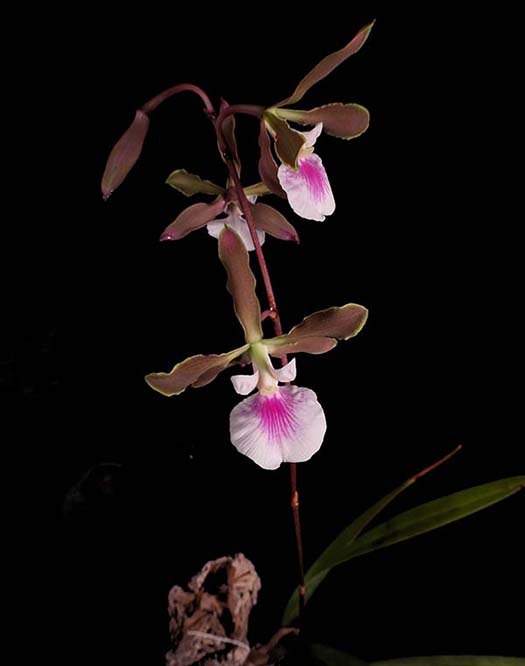June 2021
From Lynn Wiand:All orchids grown outdoors, coastal southern California |
|
Epidendrum parkinsonianumNative to Mexico. Purchased as a basket contianing multiple seedlings, all have grown well. Grows easily outside.
|
|
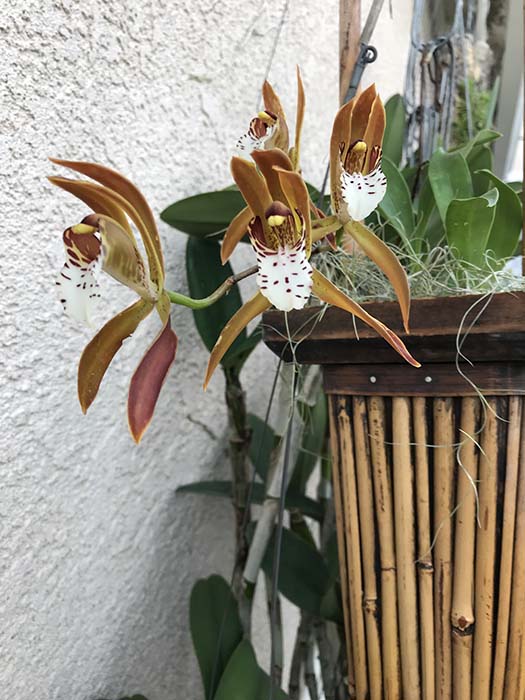 |
Cymbidium tigrinumA cute miniature, one of my favorite Cymbidium species. |
From Scott McGregor:All orchids grown outdoors, coastal southern California |
|
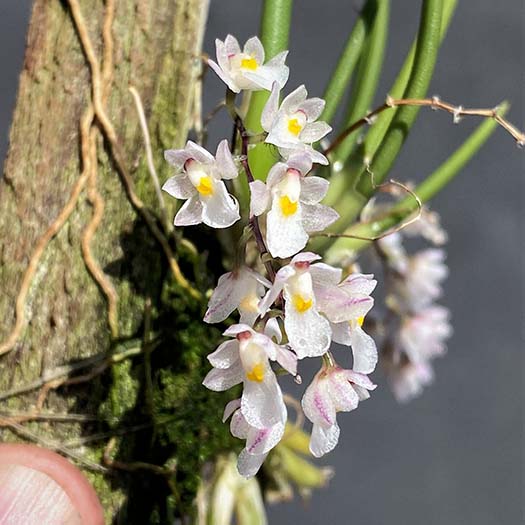 Capanemia superflua (uliginosa)A terete-leaved, twig epiphyte from Brazil, this mini has sprays of 1/4" crystalline white fragrant flowers. Some are reported to have a pink tinge (like this one) and others are pure white/yellow. I’ve killed a number of these over the years, but think I now know how to keep them happy—mount them on a twig or piece of broken clay pot, grow them bright and cool (I grow them outside), water frequently but allow to dry out completely between waterings. |
|
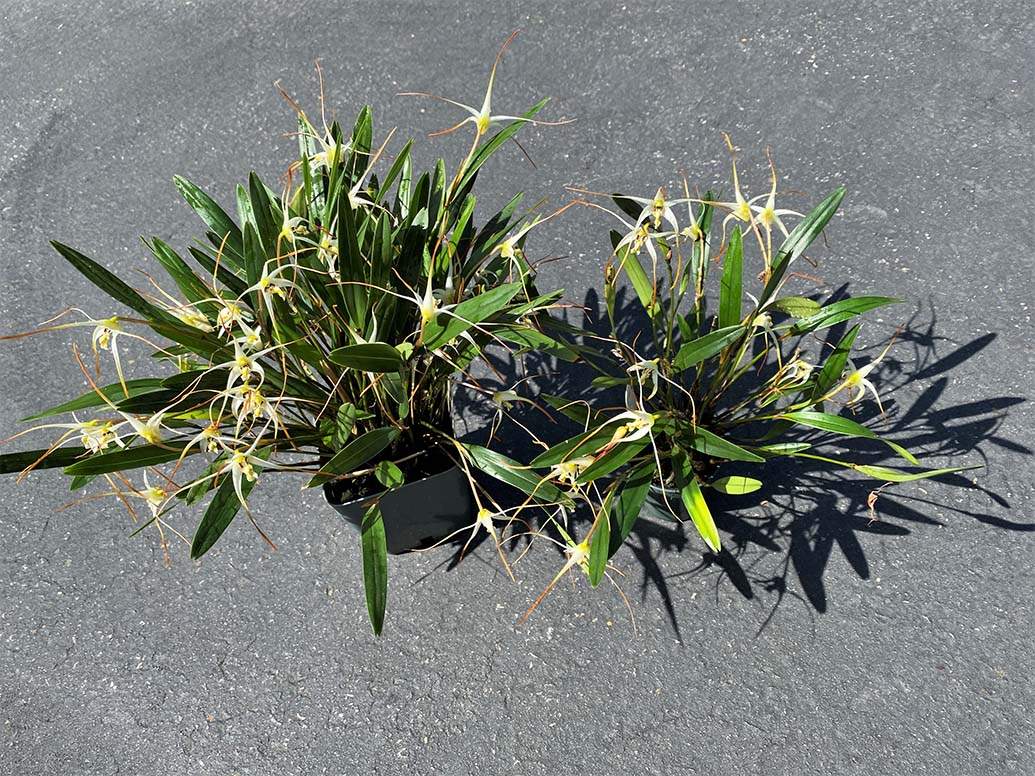 |
|
Diplocaulobium arachnoideum and
|
|
Dockrillia pugioniformis (Dendrobium pugioniforme)From Australia, this species has inverted flowers that remind me of birds in flight. |
|
Euchile (Encyclia, Cattleya) citrinaLike a downward facing, intensely lemon-scented daffodil, this Mexican species likes it bright and cool. Must be mounted because of the downward growing leaves and flower spikes. These are rumored to be somewhat tricky and hard to flower—I have two of these, side-by-side in identical conditions and one flowers reliably every year and the other grows just as happily but hasn’t flowered a single time in almost ten years (virus clean). |
|
Epidedendrum lacustreWidely distributed across Central and South America, this large species has star-like flowers in the Spring. From a division made last year, courtesy of Roberta Fox, who suggests growing it wet and in full sun. This is the purple variety, specifically from Panama. The typical variety is green and white. |
|
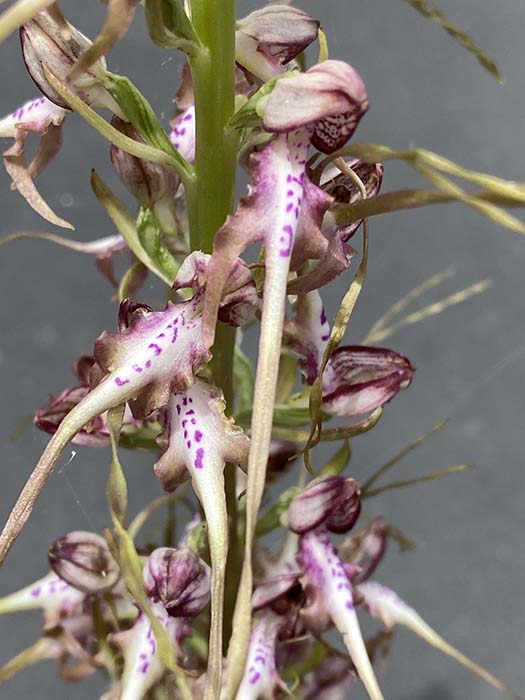 |
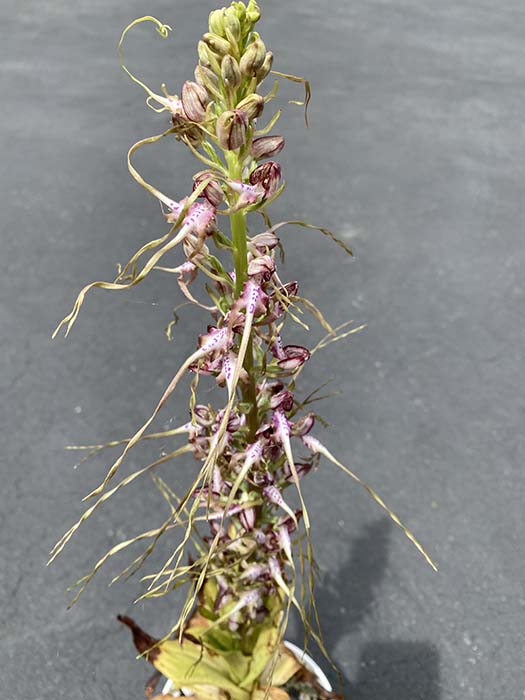 |
Himantoglossum jankae (caprinum)From Greece and surrounding countries, the “Lizard Orchid” is not the prettiest flower out there, but certainly unusual. The Hyacinth-sized tuber puts up a rosette of leaves 10” in diameter in the winter, a 2’ talk spike of flowers in the Spring, and then dies back to a dormant tuber in the Summer. I’ve read that the flowers smell “like goats”, but fortunately mine do not! |
|
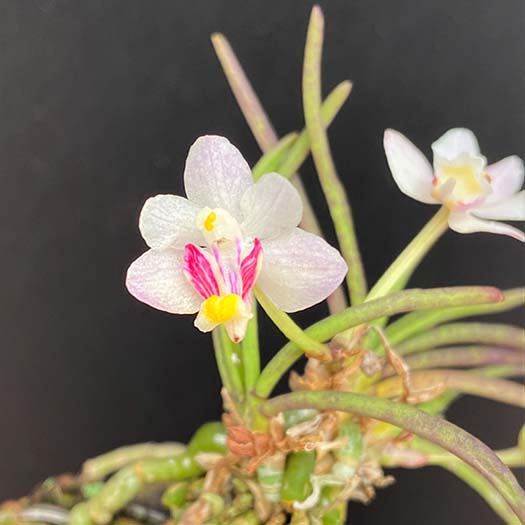 |
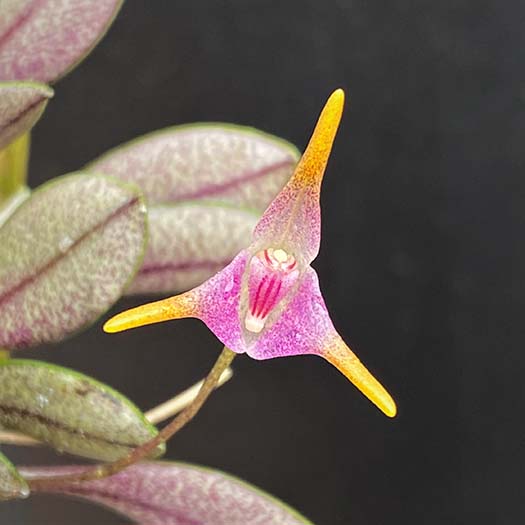 |
Holcoglossum flavescensA mini from China with needle-like leaves and 3/4" flowers. It is tougher than it looks and needs very bright light to flower. I had it somewhat shaded and it sulked for 7 years until I moved it to vanda-bright light and now it is happy and has resumed flowering. |
Porroglossum meridionaleAn interestingly colored mini (flowers just under an inch) from Peru. This is the easiest species of a challenging genus—I grow it outdoors, mounted, with medium light and daily R/O water during the summer. |
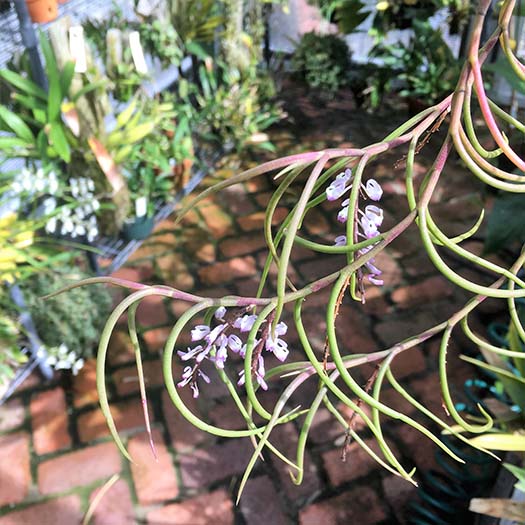
Schoenorchis juncifoliaThis graceful species from Java has hanging needle-like leaves and looks nice even when not in bloom. The flowers are like miniature Wisteria. Easy outdoor grower. |
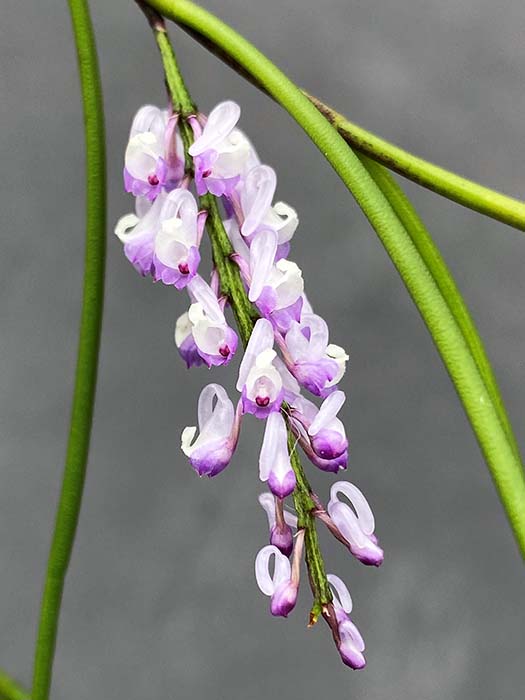 |
From Roberta Fox:
|
|
Outside in the Back Yard: |
|
 |
|
Vanda barnesiiPurchased as V. javierii. When it bloomed, it turned out to be a new species from the same highland area of the Philippines. The batch, from a nursery in the SF Bay area that no longer exists, got written up in Orchid Digest. I was delighted to be in posession of something that was new to the orchid world. |
Vanda cristataSmall flower, with a very distinctive lip that is prominent in its hybrids, It is very cold-tolerant. Native to highland areas of much of southeast Asia, southern China, and the Himalayas. |
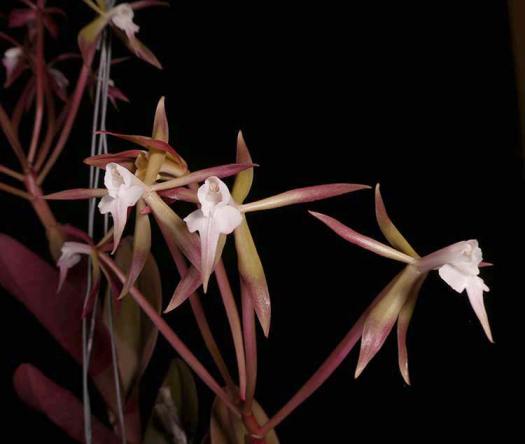 Epidendrum lacustre 'Wow Fireworks' AM/AOSSee Scott's section for some great photos of another piece of the plant. It is super-vigorous so divisions are getting around. Here are closeups of the flowers of two of my divisions, growing in the same area. The one on the left hangs with the L. anceps high above the Cymbidiums. The one on the right has been on the ground next to the Cymbidium benches, with light that is just a little bit less intense. The colors are accurate. I have found that to get the strongest purple on the flowers (and the leaves as well) the light has to be really bright - in my yard, hanging as high as possible. The culture for this plant is, to quote Harry Phillips, "Full sun, sopping wet". The plants live in 2-gallon pots with a big clump of sphagnum moss in the middle, filled in with small bark. |
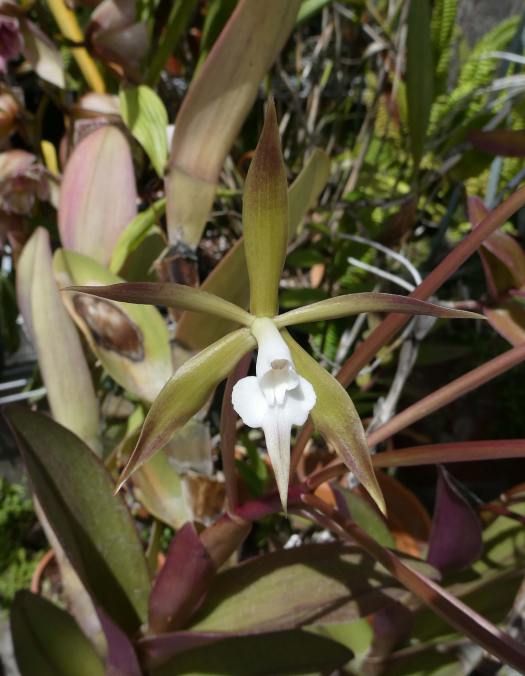 |
 Bifrenaria harrisoniaeNative to Brazil. My plant has been a somwhat reluctant bloomer. It seems to need very bright light. Possibly it would do better warmer, but at least this year I did get flowers. I love the fuzzy lip. |
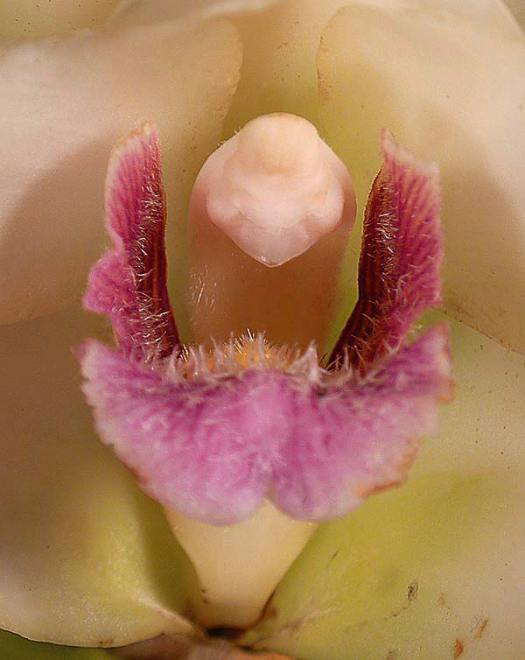 |

Coelogyne nitidaNative to an area similar to that of Vanda cristata. The crystaline flowers almost glow. The plant is fairly compact, with flowers about 1 1/2 inch wide. They are quite long-lating - the plant has been in bloom for about 6 weeks, still going strong. |
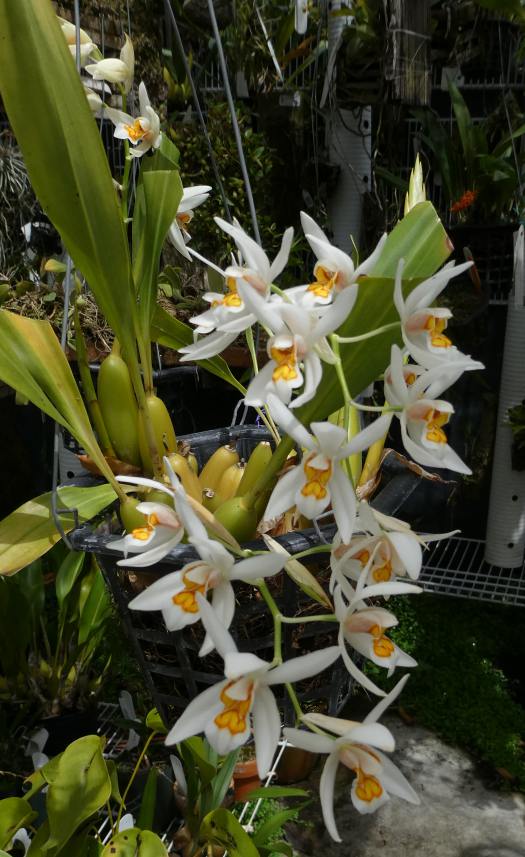 |
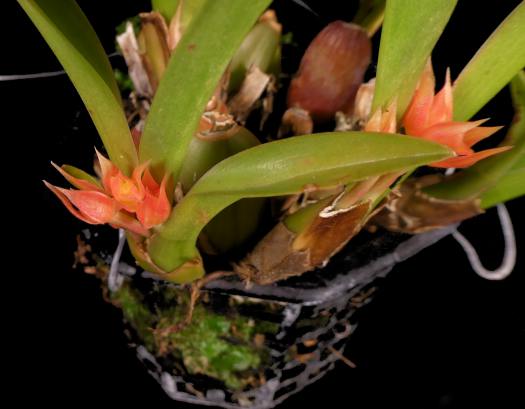 Maxillaria coccineaNative to several islands of the Caribbean. Flowers peek out from the base of the leaves. |
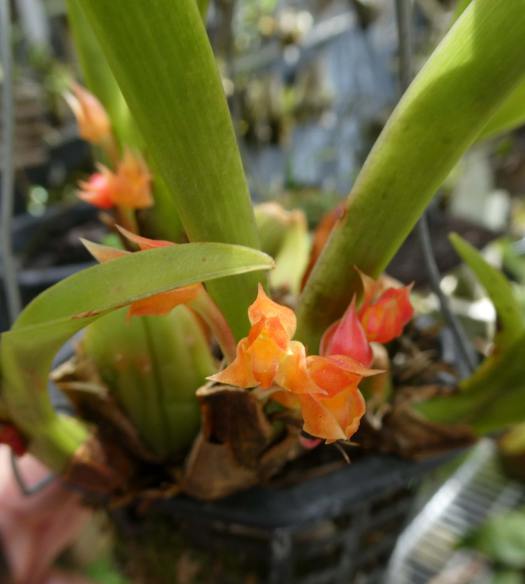 |
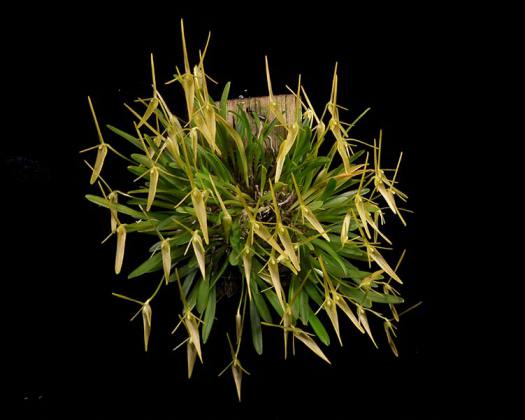 Barbosella cucullataNative to Bolivia, Colombia, Ecuador, Peru, and Venezuela. It's a small plant wit a lot of flower-power even though the color is subtle. |
|
 |
|
Diuris drummondiiThe last of the Australian terrestrials, this one from western Australia. |
|
Dendrobium fimbriatum v. oculatumSharing habitat with V. cristata and Coel. nitida, I am starting to get lots of action from several deciduous Dendrobiums. This one has a fantastic lip. I didn't particularly dry it out, and that seems to have not mattered at all. It may well be that temperature is more of a trigger for blooming than the often-prescribed dryness. |
|
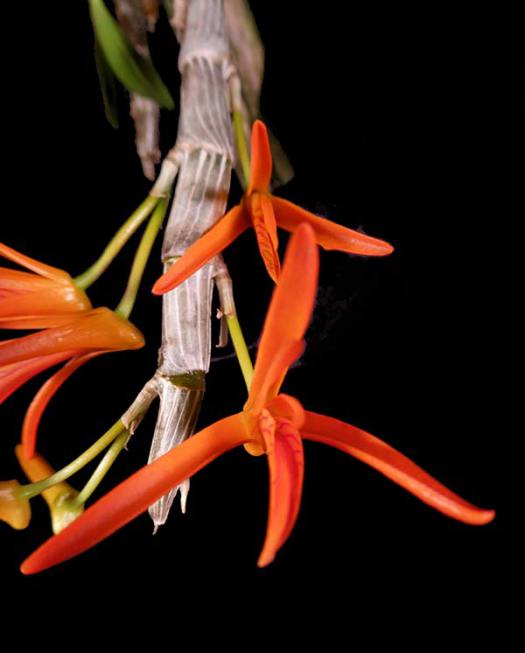 |
|
Dendrobium dickasoniiLeaves just starting to emerge while the blooms are ablaze. At first glance this looks like the more familiar Den. unicum, but it has narrower segments and more saturated color. Den. unicum is just getting started, so you'll have it next month for comparison. |
|
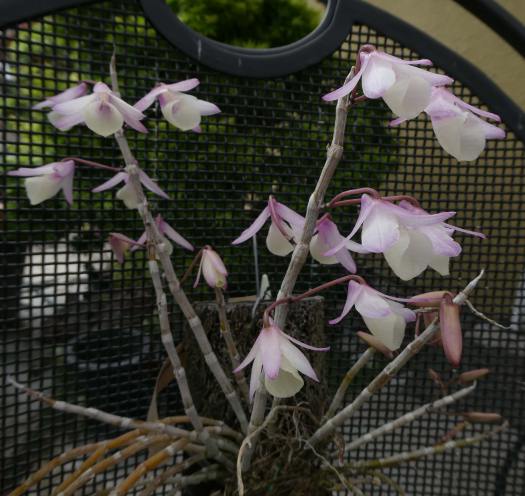
Dendrobium aphyllum var. latifoliumDelicate flowers come from bare, dead-lookng canes. Don't cut old canes until they are brown and shriveled (preferably for a year) to be sure of not harming the coming blooms. |
|
 |
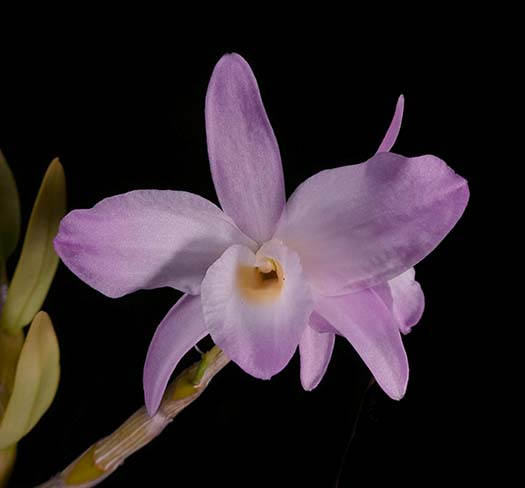 |
Dendrobium regiumFlowers have a slight pearlescent luster. I got this about two and a half years ago, as a small division. it has been growing well. I am looing forward to next year being even better. |
|
 |
 |
Wildlife in my back yardDendrobiums come from the Old World, hummingbirds only in the Americas - maybe that just makes them more curious. |
|
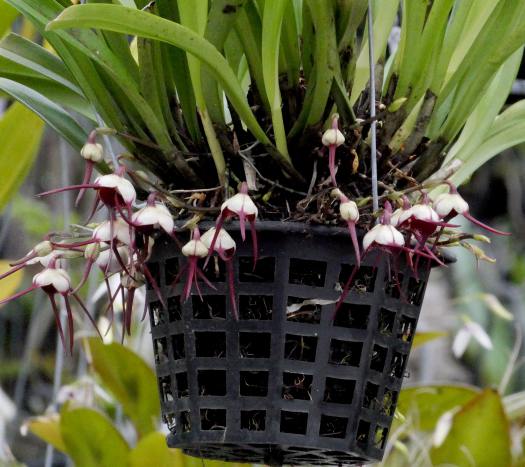
Dracula benedictiiSmall flowers, but lots of them, and more keep appearing. This native of Colombia seems to be particularly tolerant of warm weather. Where the larger-flowered Draculas tend to collapse during the heat of the day, only opening fully in the morning coolness, these flowers stay open. That's a 4-inch basket. It has been in bloom for nearly 6 weeks, and is still producing new flowers. It only blooms once a year, but does so copiously. |
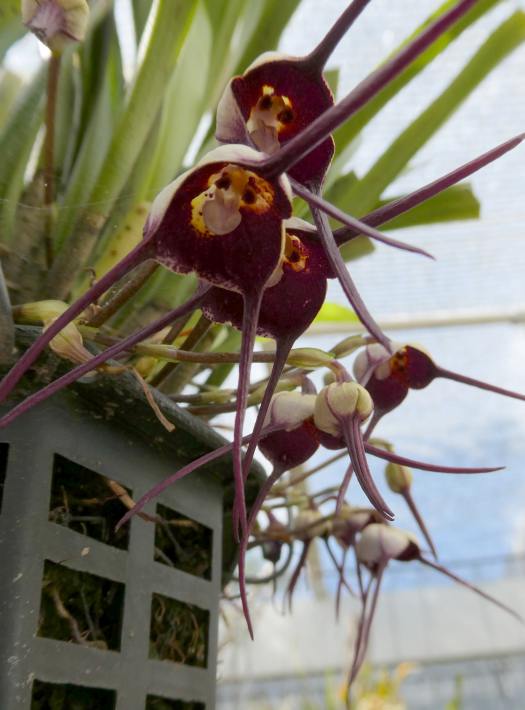 |
Angraecum germinyanumWild, curly segments characterize this one. The plant is very vigorous. |
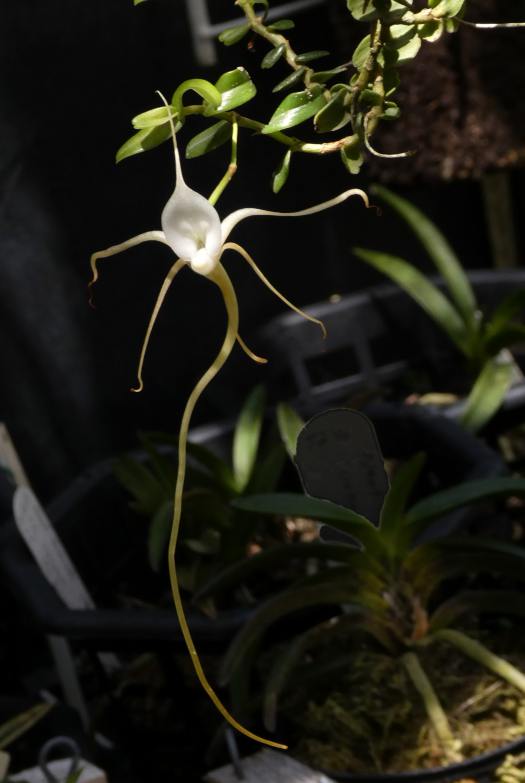
Angraecum arachnitesThis lives up to its spidery name. Leaves are small but grow on elongating stems, making for a very cute plant. |
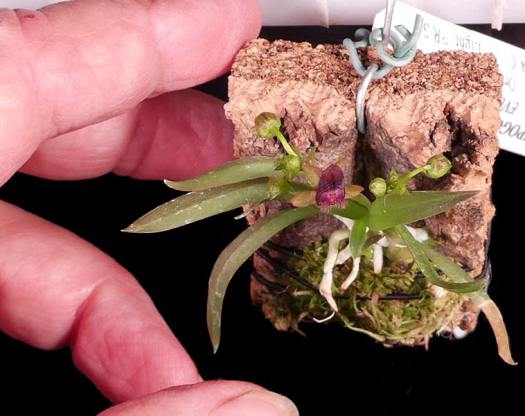 |
|
Telipogon astroglossusI would love to be able to grow the full-sized Telipogons, but they wouldn't do well in the heat of summer. This relative comes from lower elevations in Ecuador and Peru. It is a relatively recent acquisition, I hope that I am correct about its needs. The flowers are only about 1/4 inch, but with equisite detail that pushes my camera to the limit. Flower is non-resupinate (lip upward), and clearly mimics a hairy bug. |
|
 rodrogoi P1010869.jpg) |
|
Condylago (Stelis) rodrigoiThese flowers are about 1/2 inch, maybe a little less. It blooms sequentially on each inflorescence. |
|
Trichopilia tortilisThis is native to southern Mexico as well as Central America. I find the genus tricky to grow, but this one does better for me than most. Their ideal temperature range is somewhat narrow, not liking either heat or cold. But the flower is worth the effort! |
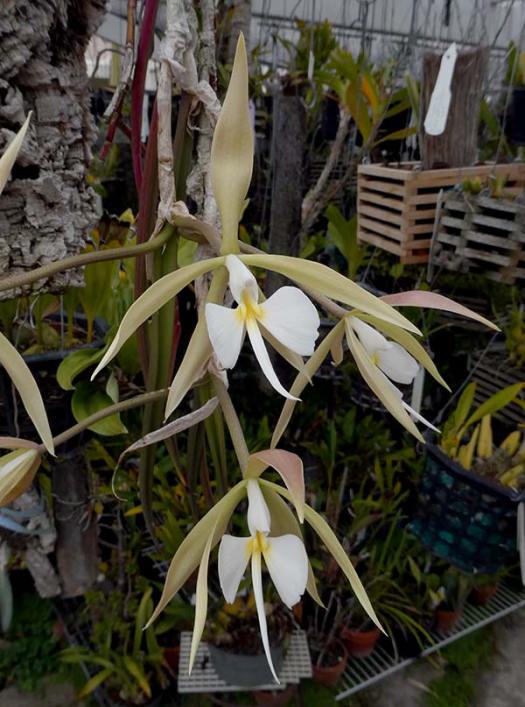
Epidendrum parkinsonianumLast year I got a good bloom out of my "compot" basket of Epi. parkinsonianums, this year was less good. But this individual plant put on an excellent show, with big flowers that were a bit over 6 inches. I got it on a small cork mount, and it struggled for a long time. When the roots started to grow off the mount, I tied it to a larger piece of cork, with sphagnum around the roots and between the two pieces of cork. That did the trick, keeping the plant hydrated better. |
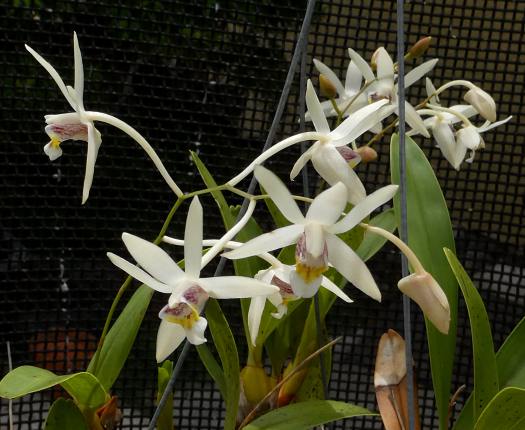
Epigeneium triflorum var. orientaleA native of Java, at elevations from 1000-1700 m. It blooms at least twice a year. I grow several members of the genus, and find that all do better after climbing out of their basket or off their mount. |
 |
Maxillaria scalariformisThis native of Panama comes from elevations of 1000-1300 m according to orchidspecies.com so should tolerate cool temperatures. Andy Phillips grows it in an unsheltered area in Encinitas. However, I have killed several, getting crown rot during the winter. They need to stay very wet. For the last seveal years, I have moved it to the greenhouse during the coldest winter months, and it has thrived. So while it should grow well outside all year, for me it seems to need a little pampering. It definitely blooms bettter being outside most of the year, blooming at least twice a year.
|
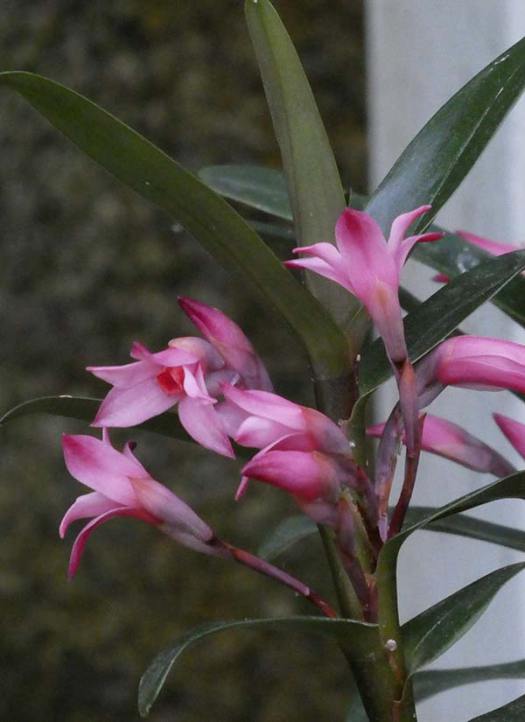 |
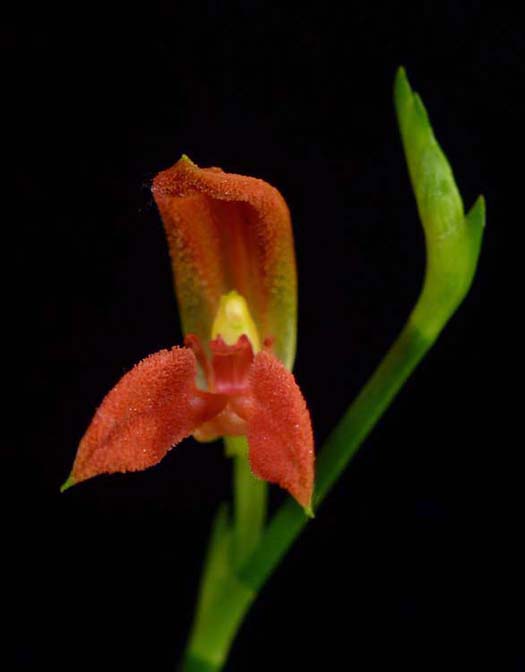
Specklinia endotrachysThis brilliant little Pleurothallid is a sequential bloomer. When I got it, about 10 years ago, it bloomed regularly for about 3 years, then the spike dried up and it looked like it might be dying. However, it put out new growth, and at last, it has started to bloom again. The flower is only 1/2 to 3/4 inch, but the color makes it very visible among all of its bench-mates. |
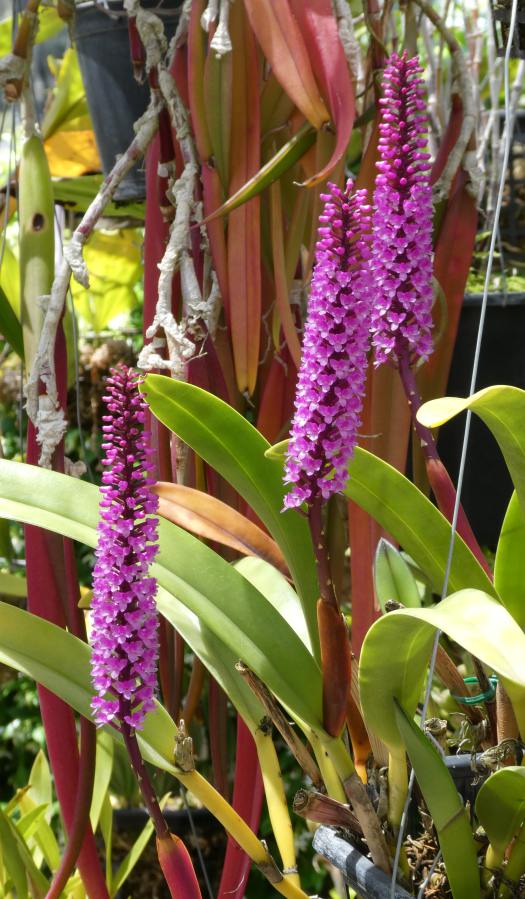
Arpophyllym giganteumThis grows in, and somewhat out of, a 10 inch basket. The flowers are hummingbird magnets - it's been awhile, but I did capture a photo of a hummingbird sampling it, which I have on my website. |
In the greenhouse... |
|
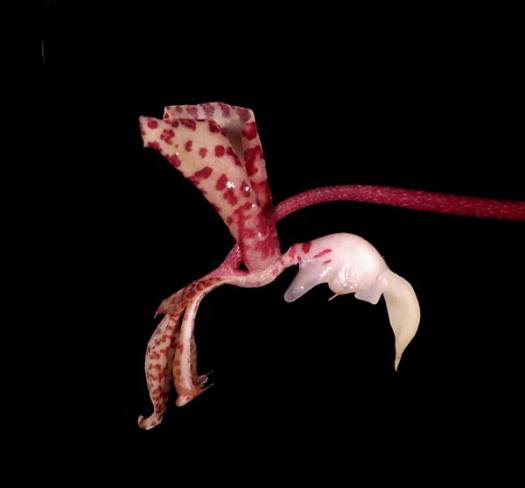
|
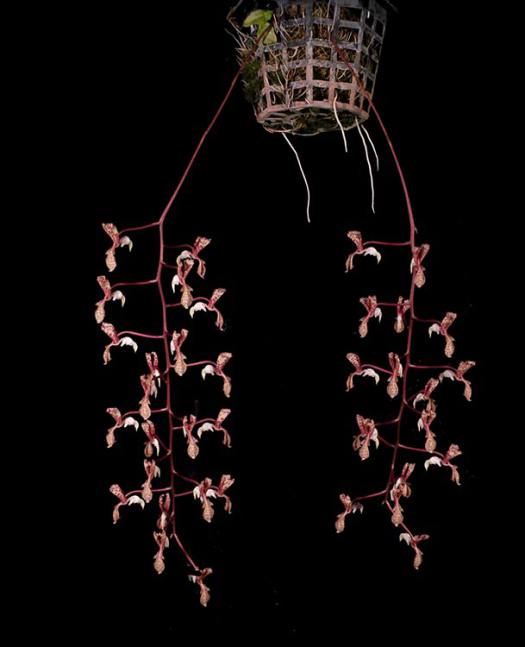 |
 |
|
Encyclia randiiNative to the state of Amazonas in Brazil. This is the first time that it has bloomed for me. |
Zelenkoa onusta (Oncidium onustum)The flowers almost glow. It blooms several times a year, and the flowers are quite long-lasting. It is native to coastal Ecuador and Peru, in an area with humidity but scant rainfall. My plant gets more water than it needs, but since it is mounted it dries quickly and that seems to be sufficient. |
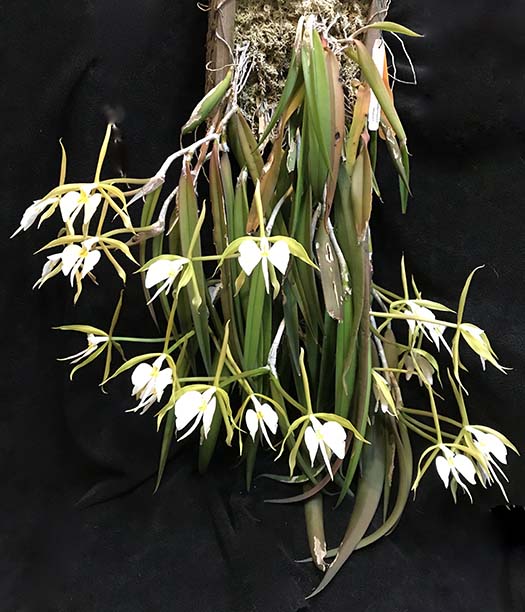
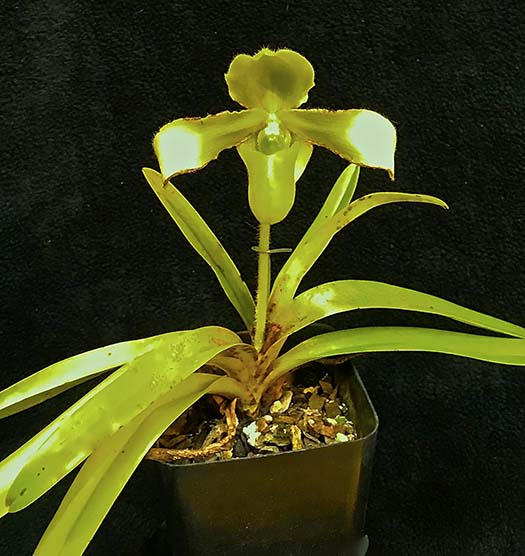
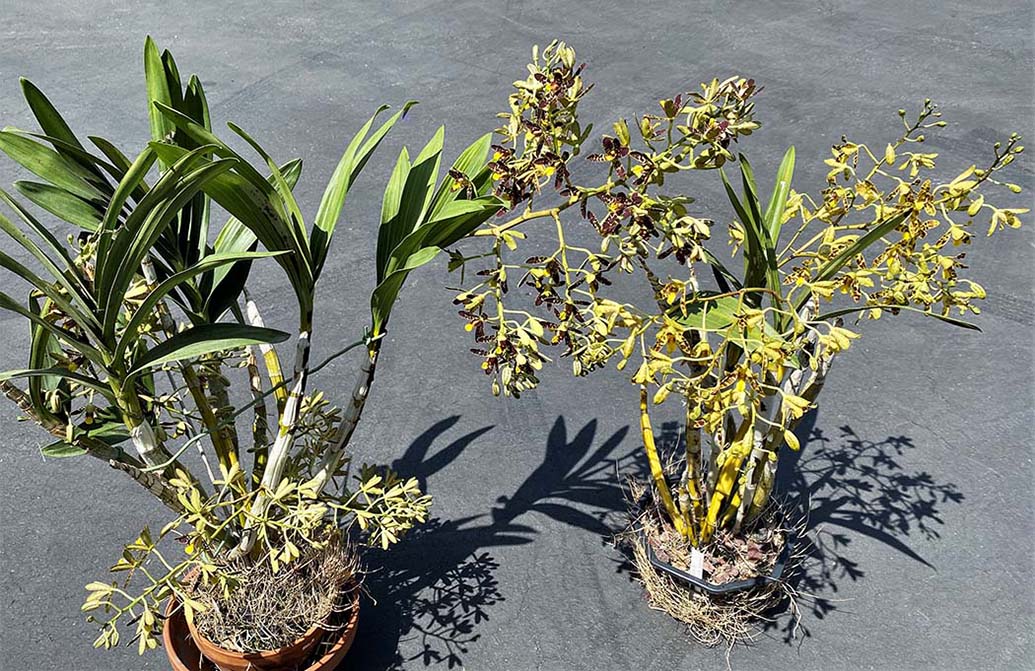
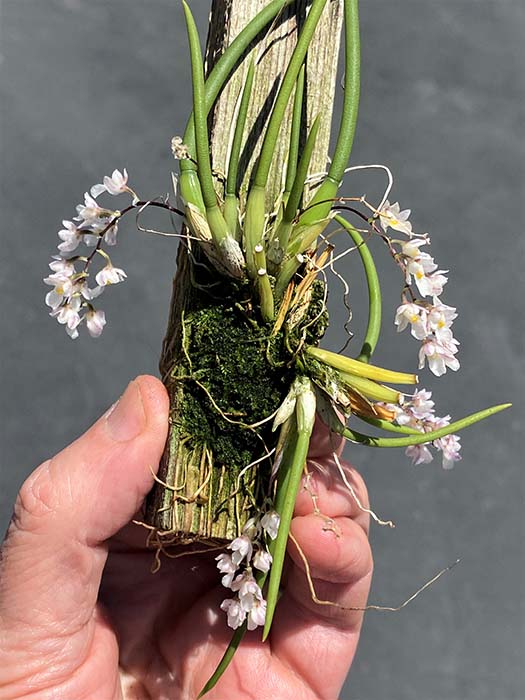
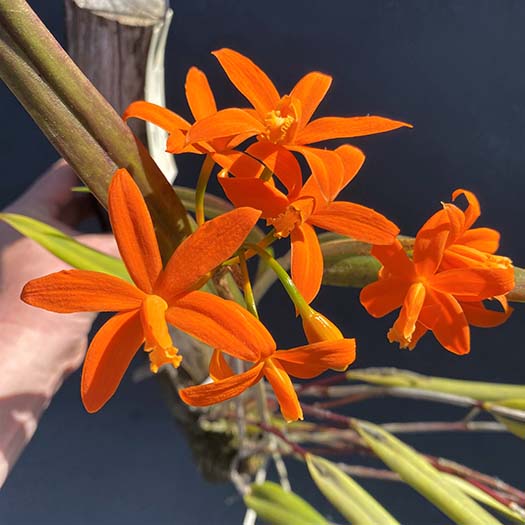


 IMG_7675.jpg)
IMG_7677.jpg)

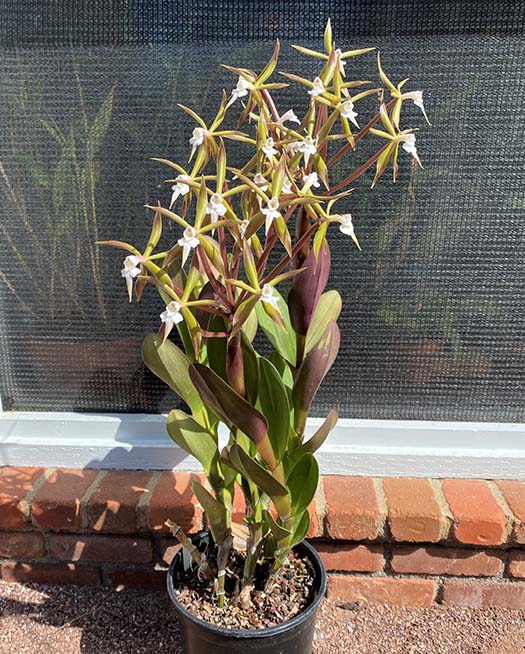
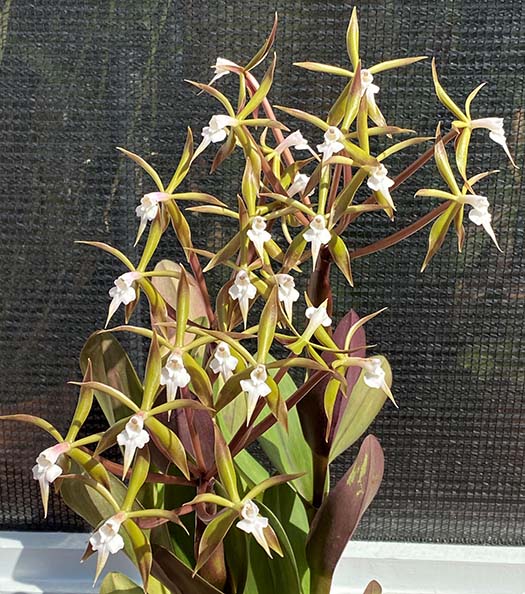

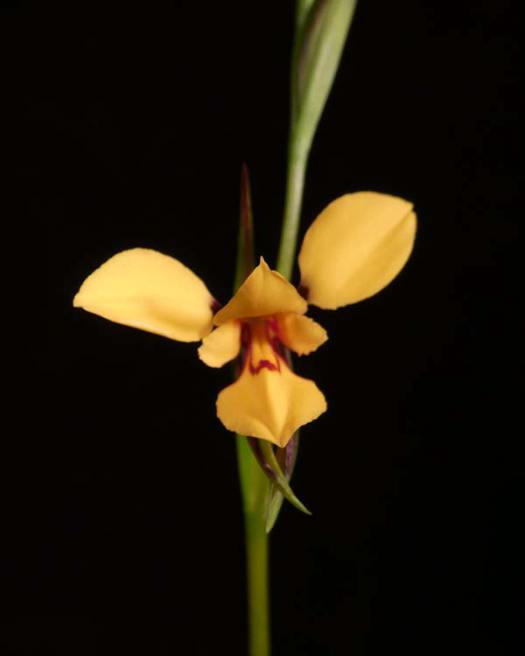

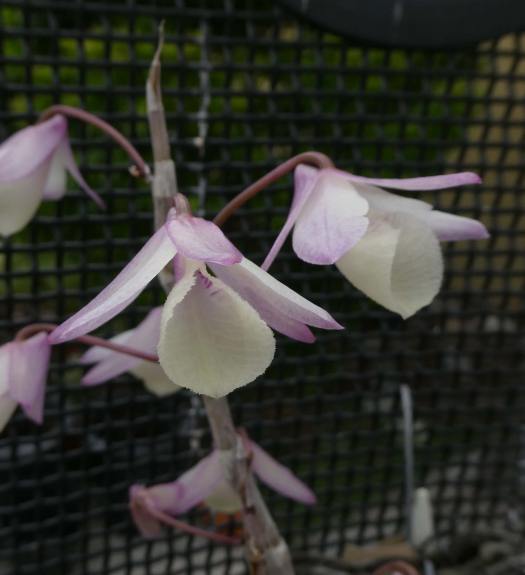
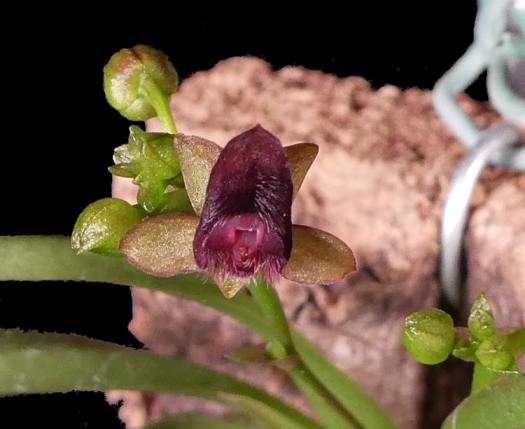
 rodrogoi P1010867.jpg)
